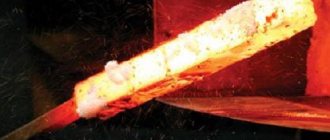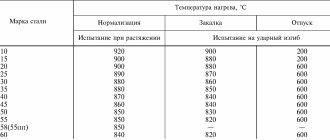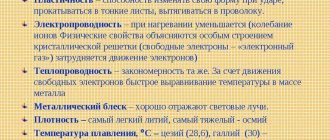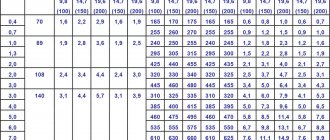8 years in the rolled metal market
We work with individual entrepreneurs, individuals, Management Companies and other organizations
We will deliver the products on time
Delivery throughout St. Petersburg and Leningrad region
There are more than 3,500 different grades of steel, each with unique physical, chemical and environmental properties. Essentially, the material consists of iron and carbon, as well as impurities and additional alloying elements. This article will be useful in determining which grade of steel is suitable for welded structures and connections, depending on the operating conditions of the part.
Types of steels
Steel is classified according to the following criteria: purpose, structural composition, chemical composition, quality and degree of deoxidation. The required amount of carbon is set during melting. To obtain special properties, the necessary mass fractions of various alloying elements are introduced into the raw material. As the amount of carbon increases, hardness and strength increases, while ductility decreases. Carbohydrate content over 0.3% makes hardening possible. This is a heat treatment process that involves heating and rapid cooling in a mode suitable for a particular brand. After hardening, the hardness and strength of the material increase.
According to the scope of application, they are divided into structural, instrumental and special purpose. The former are used for the manufacture of various parts, mechanisms, structures in construction and mechanical engineering. Tool parts are used for making tools and are highly durable. Special-purpose steels are distinguished by specific deviations in composition, for example, automatic steels with a high content of phosphorus and sulfur, intended for non-critical parts processed on automatic machines. In all other types, phosphorus and sulfur impurities are considered harmful.
Based on the chemical composition, the material is divided into carbon and alloyed. The latter are low-alloyed, alloyed and highly alloyed. Alloyed steel is a steel in which, in addition to the usual impurities, special alloying elements have been added to improve the physical, strength and technological properties of the material.
Classification by quality. With an increase in phosphorus content, the ductility and impact strength of the alloy decreases and the tendency to cold brittleness increases. An increased amount of sulfur leads to their red brittleness due to low-melting sulfide eutectics that arise along the grain boundaries. Based on the quality of steel, they are divided into:
- Ordinary quality – sulfur less than 0.06%, phosphorus less than 0.07%.
- High-quality – sulfur less than 0.04%, phosphorus less than 0.035%.
- High quality – sulfur less than 0.025; phosphorus less than 0.025%.
- Particularly high quality - sulfur less than 0.015%, phosphorus less than 0.025%.
Consider the division by structural joint:
- in the annealed state, I distinguish hypoeutectoid, hypereutectoid, ledeburite (carbide), ferritic, austenitic alloys;
- in a normalized state - pearlitic, martensitic and austenitic.
According to the degree of deoxidation, the material is:
- Boiling is a non-oxidized type with a high content of metallic impurities.
- Semi-calm - an alloy obtained by incomplete deoxidation of the metal compared to boiling.
- Calm is a deoxidized variety that contains a minimum amount of impurities and toxins.
Steel classification.
Despite the existence of many modern high-tech materials, steel remains one of the most widely used materials. This also applies to the production of drive mechanisms. Whatever the gearbox, it must contain steel parts. This statement is also true for drive chains.
So, let's look at the main options for steel classification.
By appointment.
According to its purpose, steel is divided into the following categories - construction, engineering and tool.
Construction steel.
The main requirement for construction steel is good weldability. This is possible with carbon contents up to 0.25%. It would be fair to say that low-carbon steels are classified as construction steels. Typical brands are St1, St2 and St3.
Application of construction steel.
The chemical composition of building steel determines its use in various building structures or equipment when it is necessary to connect assembly units by welding. Some models of helical gearboxes are housed in construction steel housings.
Engineering steel.
Engineering steels include an alloy of iron and carbon with the latter content ranging from 0.3 to 0.7%. This type has worse weldability compared to construction steel, but at the same time it is better able to handle the hardening and tempering process. Typical grades are Steel 40X or Steel 45.
Application of engineering steel.
Medium-carbon engineering steels are used in the production of a wide range of parts in general engineering. As a rule, the production process involves thermal or chemical-thermal operations. An example of the products presented in the catalog is spare parts for gearboxes and drive roller chain links.
Tool steel.
The name of tool steel speaks for itself. The main requirement for any steel tool is hardness. This characteristic is achieved by achieving a carbon content in the alloy of over 0.7%. The most common brands are from U7 to U13.
Application of tool steel.
In addition to its direct purpose, tool steel is used in the production of various springs. In particular, flat springs are used in the assembly of electric motors and connecting chain locks.
By carbon content.
The percentage of carbon in the chemical composition of steel determines its relationship to one of three groups:
- low-carbon – carbon content less than 0.25%;
- medium-carbon – carbon content is from 0.3 to 0.7%;
- high-carbon – the proportion of carbon exceeds 0.7%.
Low carbon steels.
Low carbon steel can have many different designations. It all depends on the mass fraction of carbon and the presence of additional chemical elements in the alloy. Example - St 08ps, Steel 10 or 25HGL. The general designation is that the first number is no more than 25. The most characteristic feature of this category is excellent weldability
Use of low carbon steel in gearboxes.
Various stamped elements of gearbox housings are produced from low-carbon steels - various inspection hatches and covers. Steel with a carbon content of 0.2-0.25% is used in the manufacture of gear wheels for geared motors of the MTs2S type and spur gearboxes of the Ts2U type. To increase the strength characteristics of the gears, after machining they undergo carburization.
Medium carbon steel.
Medium-carbon steels have initial numbers in their markings from 30 to 50, which means hundredths of a percent of carbon content. Weldability is poor - everyone is familiar with the situation when a seam cracks. An example of medium-carbon steel grades is Steel 40X, Steel 45 or 50G2.
Application of medium carbon steel.
Until recently, medium-carbon steels were the main material for the manufacture of gear shafts and gear wheels. For example, gearboxes of the RM or RCD type were produced this way. Currently, various shafts and couplings operating under load or with increased vibration are made from this category of metal.
In high carbon steels, the actual carbon content exceeds 0.55%. The higher the carbon content of steel, the more its physical properties approach those of cast iron. The same can be said regarding strength. An example of brands is U7A, U9A or U13A. The production of high-carbon steels is considered more expensive.
What does steel grade mean and how to determine it
In world practice, there are various steel marking systems. There are no uniform standards for products due to the large number of organizations monitoring and labeling metal products. In Europe, the document EN10027 is in force, which has a similar approach to the Russian one in naming steels.
According to the current Russian standard, alloying elements are designated by Cyrillic letters, and the number indicates the amount of the element as a percentage. The absence of a digital value behind the letter means that the content of the alloying additive is from 0.8% to 1.5%, with the exception of molybdenum and vanadium whose mass fraction is lower. The absence of a number in front of the alloy steel grade means that it contains 1% carbon or more. The designation and interpretation of alloying elements of steels is given in the table
| Item name | Chemical symbol | Designation in the brand | Examples |
| Carbon | C | not specified | |
| Chromium | Cr | X | 40X; 40Х13 |
| Silicon | Si | WITH | 65SG; 30ХГСА |
| Nickel | Ni | N | 45ХН; 12Х18Н10Т-Ш |
| Manganese | Mn | G | 65SG; 30ХГС |
| Tungsten | W | IN | CHVG; Х6ВФ |
| Molybdenum | Mo | M | 12ХМ; 15N2M |
| Cobalt | Co | TO | R10F5K5; R6M5K5 |
| Titanium | Ti | T | 15ХГН2Т; 5ХНТ |
| Vanadium | V | F | 12ХМФ; 12Х8ВФ |
| Aluminum | Al | YU | 38ХМНУА; 36НХТУА |
Chromium in an amount from 1% to 4% improves the hardenability of the alloy, increases its strength and heat resistance. Various parts of mechanisms operating under high loads are made from chromium. Chromium is found in large mass fractions in stainless and heat-resistant samples.
Silicon in an amount of 1% to 1.5% increases the elastic properties of the material and is used for the manufacture of springs and leaf springs. Silicon is often included in the instrumental group.
Nickel in small proportions has a beneficial effect on impact strength and strength, and in large quantities, usually in combination with chromium, it imparts heat-resistant properties and high corrosion resistance.
Manganese content of 1% to 1.5% increases toughness, that is, its ability to withstand shock loads at low temperatures, when the material becomes brittle.
Tungsten dramatically increases red-hardness and wear resistance, which is a necessary property of cutting materials in which it is most widely used. Molybdenum , like tungsten, increases wear resistance and red-hardness, increasing resistance to oxidation at high temperatures.
Cobalt , being in the composition of steel and non-metallic cutting materials, gives them resistance to impact loads at elevated temperatures. The presence of titanium promotes fine graining in the unhardened state and also improves oxidation resistance.
Vanadium , usually combined with chromium, improves strength properties and increases resistance to oxidation at high temperatures. Aluminum increases heat resistance and scale resistance, in addition, like titanium, affecting the extraction of grain size.










